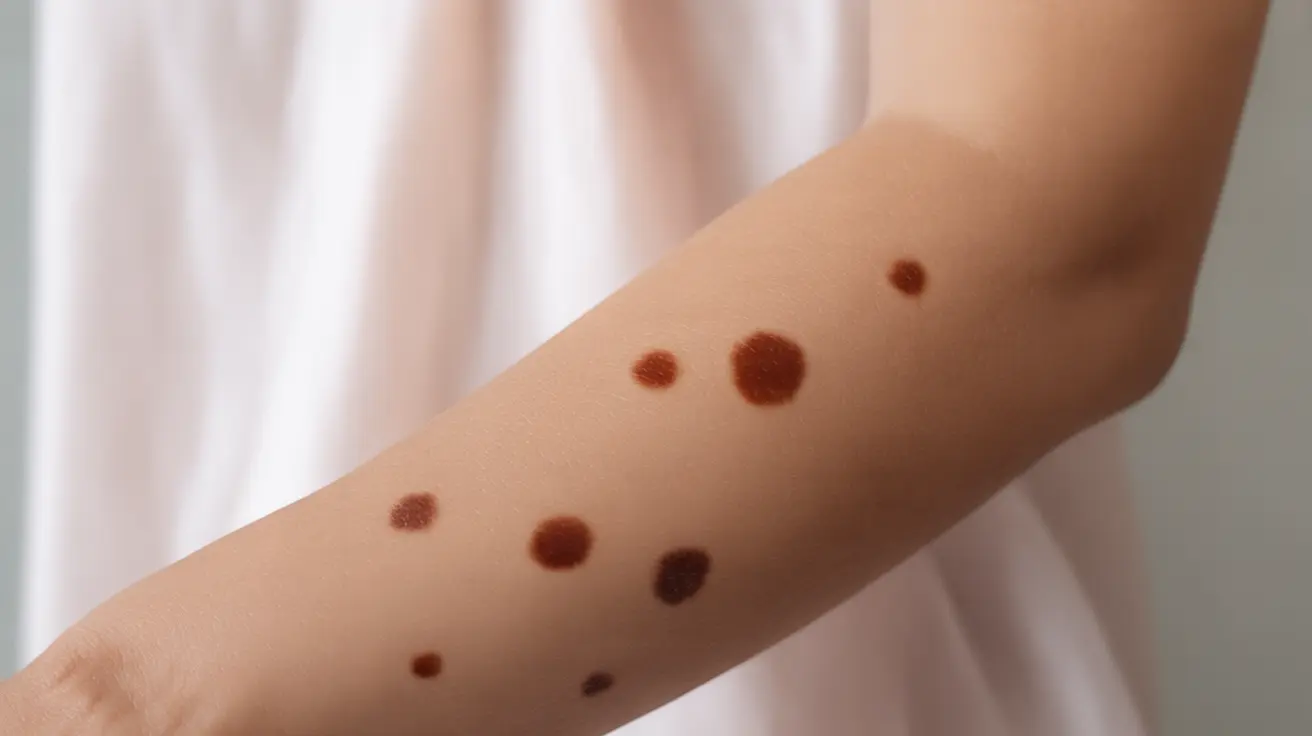Lentigo simplex is a common, benign skin condition characterized by small, well-defined brown spots on the skin. While these spots may resemble freckles or moles, they have distinct characteristics that set them apart. Understanding the nature of lentigo simplex can help you better manage your skin health and know when to seek medical attention.
What Is Lentigo Simplex?
Lentigo simplex presents as a flat, uniform brown spot on the skin, typically measuring 3-15 millimeters in diameter. Unlike freckles, these spots don't darken with sun exposure and maintain their appearance year-round. They can appear anywhere on the body, including areas that aren't typically exposed to sunlight.
Distinguishing Features and Characteristics
These pigmented lesions have several key characteristics that help differentiate them from other skin spots:
- Well-defined borders
- Uniform brown color
- Flat surface
- No seasonal variation in appearance
- Can appear at any age
- May occur on any part of the body
Causes and Risk Factors
The development of lentigo simplex is primarily linked to genetic factors rather than environmental influences. Unlike solar lentigines (age spots), these spots aren't directly caused by sun exposure, though they may be more noticeable in people with lighter skin tones.
Common Contributing Factors
Several factors may influence the development of lentigo simplex:
- Genetic predisposition
- Age (can develop at any time, including childhood)
- Skin type
- Certain genetic syndromes
Diagnosis and Medical Assessment
Healthcare providers typically diagnose lentigo simplex through visual examination. In some cases, they may recommend a dermoscopy for closer inspection or a biopsy if there's any concern about potential skin cancer.
Treatment Options
While lentigo simplex is benign and doesn't require medical treatment, some people choose to have them removed for cosmetic reasons. Available treatment options include:
- Laser therapy
- Cryotherapy
- Topical medications
- Chemical peels
Preventive Measures
Though lentigo simplex isn't caused by sun exposure, good skin care practices are still important:
- Use broad-spectrum sunscreen
- Wear protective clothing
- Regular skin examinations
- Maintain good overall skin health
When to See a Healthcare Provider
Consult a healthcare provider if you notice any of these changes in your skin spots:
- Irregular borders
- Color changes
- Growth or expansion
- Bleeding or itching
- Multiple new spots appearing suddenly
Frequently Asked Questions
What does lentigo simplex look like, and how is it different from freckles or moles? Lentigo simplex appears as a flat, well-defined brown spot. Unlike freckles, it doesn't darken with sun exposure, and unlike moles, it remains flat and doesn't change in texture. The color is typically uniform and the borders are clear.
Can lentigo simplex turn into skin cancer, and does it need to be removed? Lentigo simplex is a benign condition and typically doesn't turn into skin cancer. Removal isn't medically necessary unless there are concerning changes in appearance. However, removal can be done for cosmetic reasons if desired.
What causes lentigo simplex, and is sun exposure a factor? Lentigo simplex is primarily caused by genetic factors rather than environmental influences. Unlike other pigmented lesions, sun exposure isn't a direct cause, though the spots may be more noticeable in people with fair skin.
Are multiple lentigo simplex spots a sign of a more serious underlying condition? Multiple lentigo simplex spots aren't usually cause for concern. However, if they appear suddenly or in unusual patterns, they should be evaluated by a healthcare provider, as they can sometimes be associated with certain genetic syndromes.
What treatment options are available for lentigo simplex if I want it removed for cosmetic reasons? Several treatment options are available for cosmetic removal, including laser therapy, cryotherapy, topical medications, and chemical peels. The best treatment choice depends on factors like spot size, location, and individual skin characteristics.




